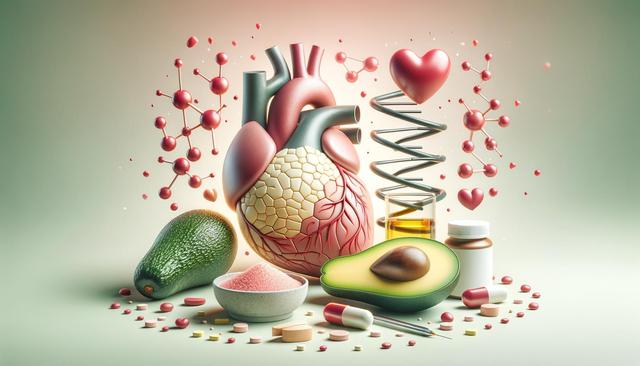Understanding the Impact of Diet on Cholesterol
Cholesterol plays a vital role in the body, but when levels—especially of low-density lipoprotein (LDL), often referred to as “bad” cholesterol—become too high, it can increase the risk of heart disease. Diet is one of the most influential factors in cholesterol management. By understanding what not to eat with high cholesterol, individuals can take meaningful steps toward better heart health. The foods we consume either support or hinder our ability to regulate cholesterol levels. Saturated fats, trans fats, and excessive sugar intake are among the primary culprits that contribute to elevated cholesterol.
Adopting heart healthy eating guidelines for cholesterol involves more than just adding nutritious foods—it also requires removing or reducing intake of those that are detrimental. Awareness is the first step. Many people unknowingly consume foods that worsen their cholesterol profile, making it essential to identify and avoid these items.
Processed Foods and Hidden Fats
Processed and packaged foods are often among the worst foods for cholesterol levels. These items frequently contain trans fats and high levels of saturated fats, which can raise LDL cholesterol while lowering beneficial high-density lipoprotein (HDL) cholesterol. Foods such as frozen meals, snack cakes, and margarine spreads may seem convenient, but they can be harmful for those aiming to lower cholesterol.
Some common processed foods to limit or avoid include:
- Packaged baked goods like cookies, pies, and pastries
- Microwave popcorn with butter flavoring
- Deep-fried snacks such as chips and fries
- Ready-to-eat meals with creamy sauces or gravies
Choosing whole, minimally processed foods is a smart alternative. Cooking at home with fresh ingredients allows better control over fat and salt content, aligning with diet tips for lowering bad cholesterol.
Excessive Red Meat and Full-Fat Dairy
Animal-based products, particularly red meats and full-fat dairy, are significant sources of saturated fats. While they can be enjoyed in moderation, frequent consumption may contribute to rising cholesterol levels. Beef, pork, lamb, butter, cheese, and whole milk are examples of foods that can impact cardiovascular health negatively if consumed in large amounts.
To reduce intake of saturated fats, consider these swaps:
- Choose lean cuts of meat like skinless poultry or plant-based proteins
- Replace full-fat dairy with low-fat or non-dairy alternatives
- Use olive oil or avocado oil instead of butter or lard
Being mindful of these choices can help manage cholesterol naturally and support long-term heart wellness.
Sugary Beverages and Refined Carbohydrates
While fat is often blamed for high cholesterol, sugar plays a more significant role than many realize. High consumption of added sugars and refined carbohydrates—like white bread, pastries, and sugary drinks—can lead to weight gain and increased triglycerides, both of which are linked to poor cholesterol levels. For those wondering what not to eat with high cholesterol, sugar-laden beverages and processed carbs should be high on the list.
Common culprits include:
- Sodas and sweetened teas
- Sweetened breakfast cereals
- White pasta and white rice
- Desserts like cakes, ice cream, and candy
To support heart healthy eating guidelines for cholesterol, it’s advisable to choose complex carbohydrates such as whole grains, legumes, and vegetables. These foods provide fiber, which can help lower LDL cholesterol levels.
Making Sustainable Dietary Changes
Changing eating habits doesn’t mean giving up enjoyment of food. It’s about making informed decisions that align with long-term health goals. Starting with small, manageable adjustments can lead to lasting improvements. Emphasizing foods that are low in saturated fat and high in fiber, such as fruits, vegetables, nuts, and legumes, supports better cholesterol outcomes.
Here are some practical diet tips for lowering bad cholesterol in daily life:
- Plan meals ahead to avoid relying on fast food or processed snacks
- Use herbs and spices instead of salt and butter for flavor
- Incorporate more plant-based meals during the week
- Read nutrition labels to spot hidden sugars and fats
Consistency is key. Over time, these changes can lead to noticeable improvements in cholesterol levels and overall heart health.
Conclusion: Taking Control of Your Heart Health
Managing cholesterol through diet is a proactive step toward reducing the risk of heart disease and improving overall well-being. By becoming aware of the foods to avoid for high cholesterol management and replacing them with supportive alternatives, individuals can directly influence their health outcomes. Avoiding the worst foods for cholesterol levels and following heart healthy eating guidelines for cholesterol empowers people to make choices that benefit both their current and future health. With each meal, there’s an opportunity to nourish the body and protect the heart—starting with what’s on the plate.




Leave a Reply